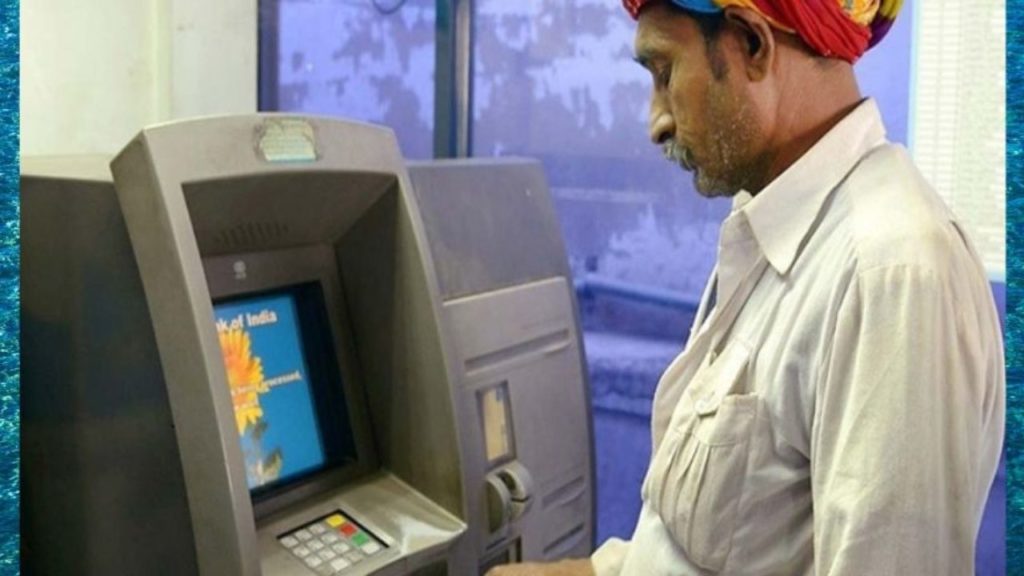Pay Rs 24 For Rs 5000 or Higher ATM Withdrawal; Extra Fees For Metros (Suggestions By Panel)

As per the reports, a Reserve Bank of India panel, set up in June last year, recommended a population-based approach for fixing ATM interchange fees and customer charges.
Contents
What Does The Report Say?
So far, the report, however, was not made public and there is no indication if the regulator intends to accept the suggestions.
BloombergQuint reviewed a copy of the report, pointing to low ATM penetration in India, the committee, which included industry participants, suggested a change in the approach to ATM charges.
What Are The Key Recommendations?
According to the reports, the cost of operating ATMs has gone up in recent years, the interchange fees and the cap on customer ATM usage charges have not been reviewed since 2012 and 2008.
Further, the committee’s suggestions are aimed at improving the economic viability of operating ATMs and increasing deployment, especially in semi-urban and rural centres.
What About Interchange Fees?
According to the reports, for ATM transactions in all centres with a population of over 1 million, the interchange fee would be increased to Rs 17 from Rs 15, for every financial transaction, and to Rs 7 from Rs 5, for every non-financial transaction.
Also, for ATM transactions in all centres with a population of below 1 million, the fee would be increased to Rs 18 from Rs 15, for every financial transaction, and to Rs 8 from Rs 5, for every non-financial transaction.
Withdrawal Charges Recommendation
The report said, only cash withdrawals up to Rs 5,000 should be considered as free transactions, while banks can levy a charge on the customer for every transaction above Rs 5,000. Between April and June 2019, around 66 percent of ATM transactions were below Rs 5,000.
Increase the cap for charging customers for financial transactions, over and above the free transaction limit, by 20% to Rs 24 per transaction from Rs 20 per transaction, not including taxes, the report added.
What About Free Transactions?
- The number of free ATM transactions should be increased from five, at present, to six per month, for centres where the population is less than 1 million.
- It will continue with the existing three free ATM transactions per month in metros and satellite cities/towns and the same would apply to all centres with a population of over 1 million and above.
- Also, banks can decide on the number of free transactions on their ATMs for their customers.
Further, a person aware of the recommendations talked about the broad’s intent of the committee is to ensure that there is an increase in ATM deployment in smaller towns, semi-urban and rural areas.
On the condition of anonymity, the person said that while there are over 600,000 villages in the country, ATM penetration is very low because the density of the population is low and the current incentives do not allow operators to recover costs.
To increase ATM penetration and to ensure that operators are compensated for the logistical and travel costs of servicing ATMs in these areas, margins needed to improve, he further added.
The coordinator of Cashless Consumer, Srikanth L, said, the lack of engagement with consumers as a stakeholder by the committee has led to recommendations based solely through the lens of industry participants.
“There needs to be a public call for inputs before determining pricing and charges for ATM transactions,” he added.
There were over 2.1 lakh ATMs deployed across the country as of March 2020, according to RBI data.
Where state-owned banks have a 61% market share of deployed ATMs, private banks have 30% and white-label operators have a market share of 9%, according to the report.
What About The Cost of Operating ATMs?
According to the report, the average monthly cost of operating an ATM, based on an assessment of operating costs for the various stakeholders, is between Rs 75,000 and Rs 80,000 per machine.
- The committee said, if there were an average of 120 transactions on every ATM a day, the blended cost per financial transaction would be in the range or Rs 15.60 to Rs 16.70.
- It said, at present, the blended interchange fee stands at Rs 12.50, including a Rs 15 interchange fee for financial transactions and Rs 5 for non-financial transactions.
What Does The Bank Say?
Most of the state-run banks did not recommend a change in the ATM interchange fee, while private sector banks suggested that the interchange fee be brought on a par with the cost they incurred, the report said.
While both white- and brown-label ATM operators recommended an increase in the interchange fee to Rs 30 for financial transactions and Rs 10 for non-financial transactions.
Although, these recommendations don’t consider the cost of cassette swap for currency notes in an ATM, which could add another 15% in additional costs.
The committee said that if the various regulatory compliance costs regarding ATM security, cassette swaps, ATM replenishment and cash management were to be taken into account, the average cost per transaction for each operator would be higher.

Comments are closed, but trackbacks and pingbacks are open.